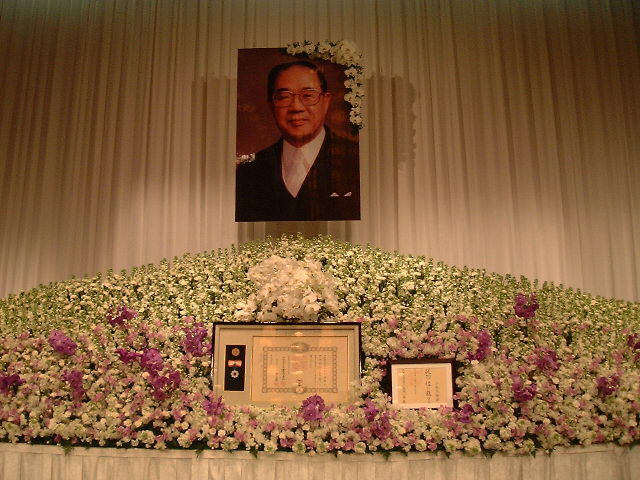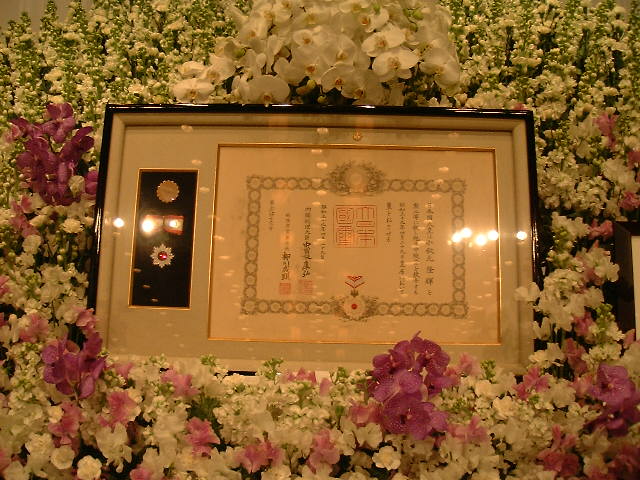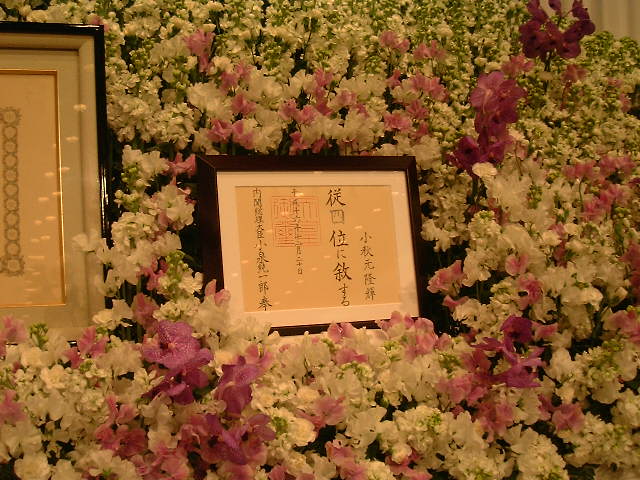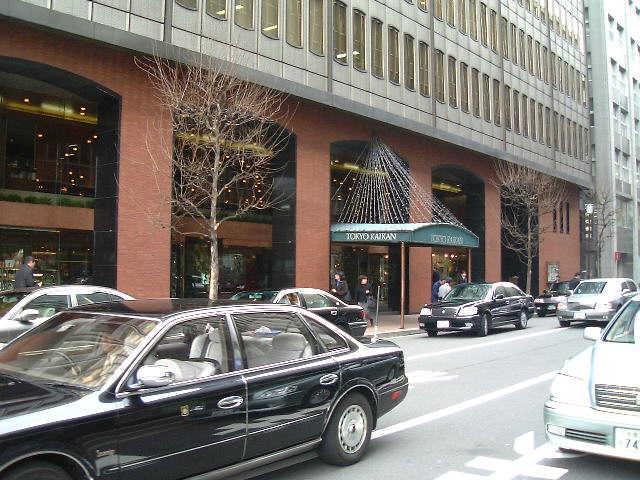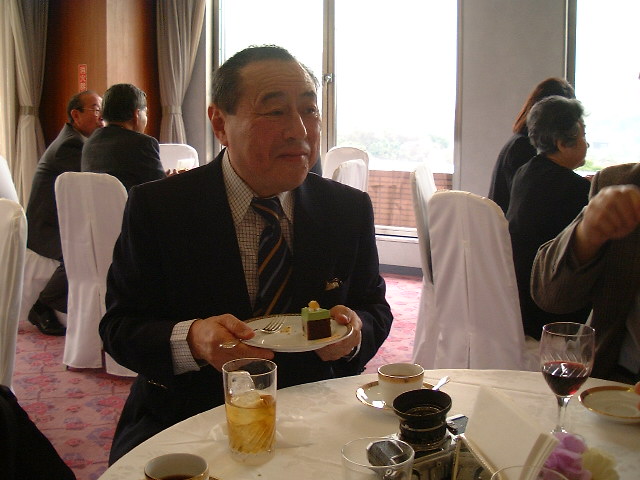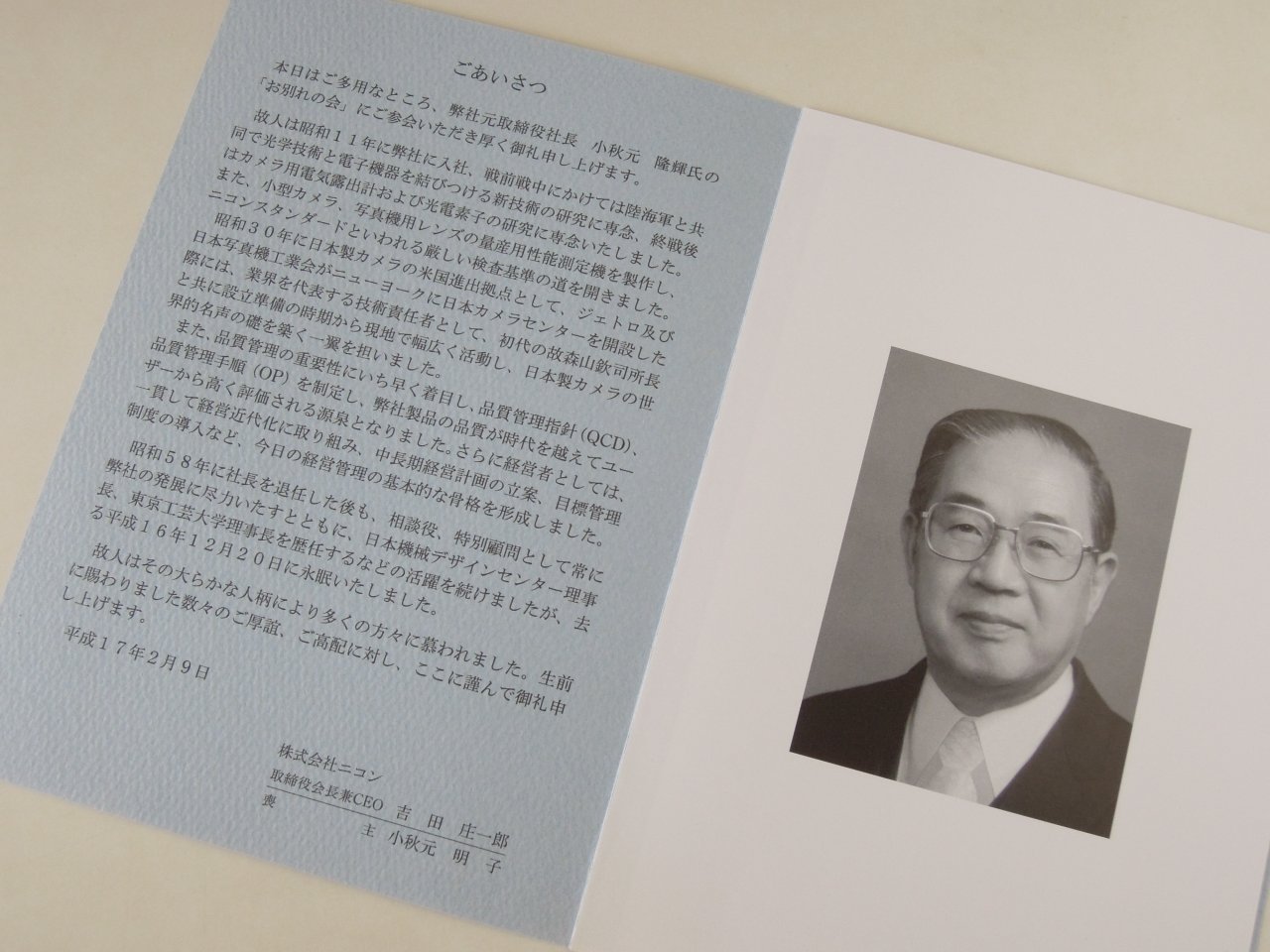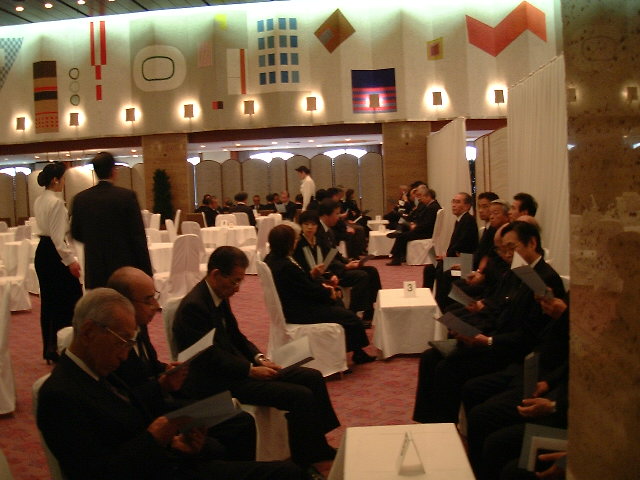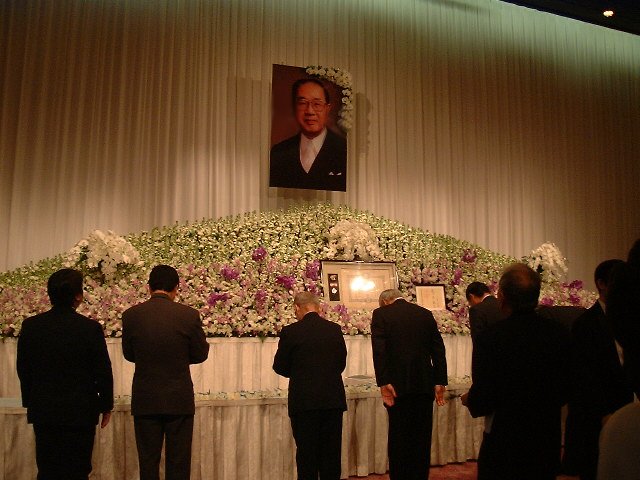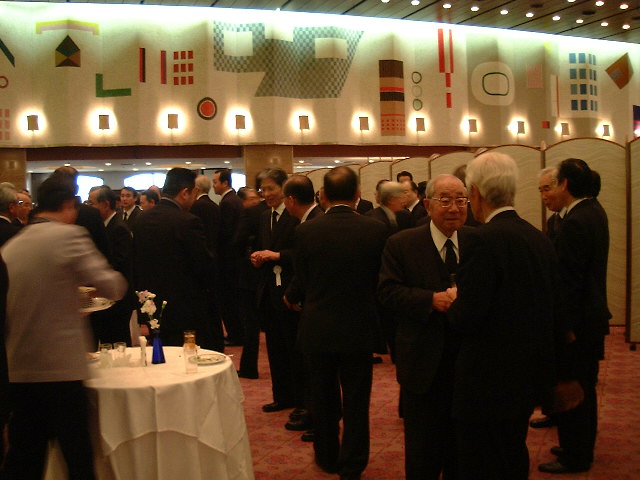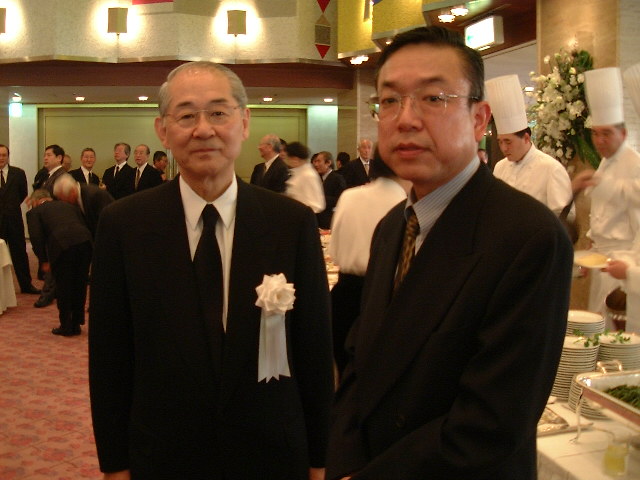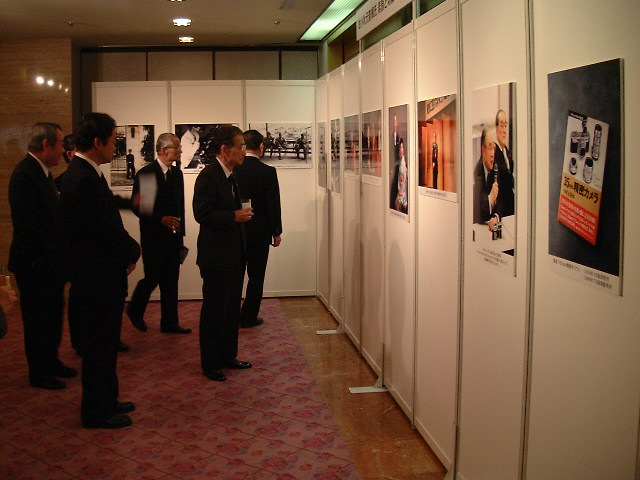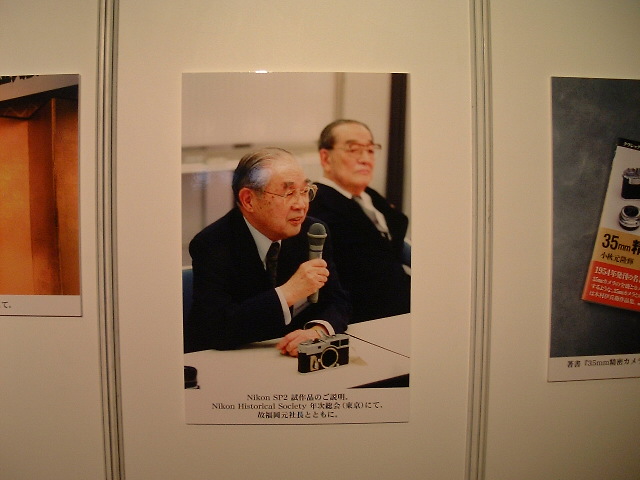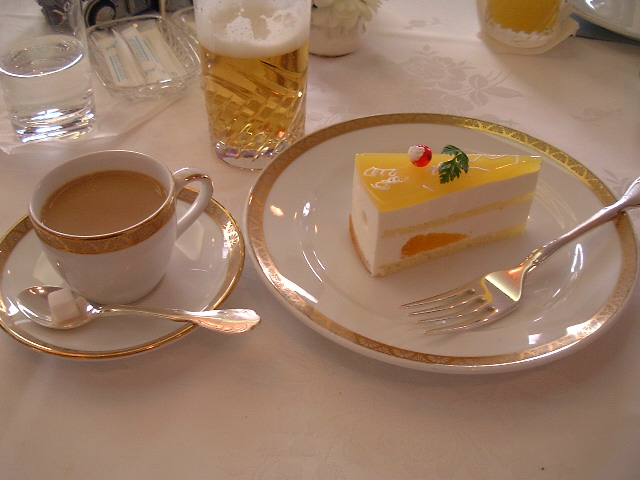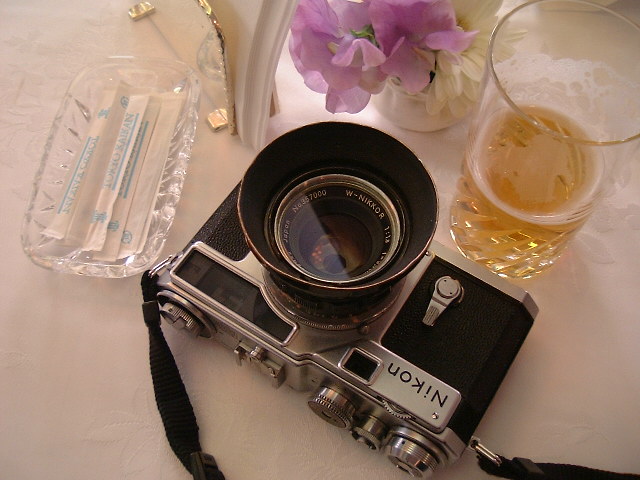|
My uncle
Hello, my friend, my name is Ryu Koakimoto.
I am a member of the Nikon Kenkyukai Tokyo.
Thank you very much for attending in my uncle's memorial service for today.
I think that 91 years old is long life.
However, I have not heard my uncle's voice any longer.
I would like to talk about my uncle.
1930's
My uncle joined Nippon Kogaku K.K. in 1936.
The war of Japan and China broke out in 1937.
At that time, my father was a correspondent of the Asahi Shimbun (Newspaper).
My father was appointed the correspondent in China,
and established the branch in Jinan City, Shandong Province.
My family went to Shandong Province with my father in 1938.
My uncle visited my house at the summer vacation in those days.
At that time, Nippon kogaku had not been producing cameras yet,
and was supplying the Nikkor lenses to Canon.
My uncle had Canon camera. A Nikkor lens was mounted in my uncle's Canon.
My father was obtaining a high salary for the correspondent.
Therefore, my father bought CONTAX II, and he was boasting of it.
My father always saw my uncle's Nikkor lens, said "The lens is Zeiss!!",
and he made fun of my uncle.
My uncle said, "My Nikkor lens is also excellent!!" and objected.
It was a very friendly, very happy discussion for me.
At that time, I was a little student in the elementary school.
The camera stored in a leather case is shape like the tank.
I played with my younger brother by two tanks.
The tanks were CONTAX II and Canon.
It is nostalgic memories though I was scolded from my father.
My uncle was always my master in the photograph
The war was over.
Nippon Kogaku determined not arms but the citizen use equipment to be produced.
The Nikon I was completed by the effort of the engineer of Nippon Kogaku.
My uncle wrote the book "The 35mm Precision Camera" in around 1953.
I went on location to take the example photograph for book with my uncle
when I was a university student.
At that time, I learnt 35mm photography from my uncle.
I joined the Tokyo Bureau of PANA (Pan-Asia Newspaper Alliance) of
a foreign news agency in 1955.
The president of the news agency was Chinese, Mr. Norman Soong
who had learnt journalism in the United States.
My uncle wrote my recommendation card to the president.
All the photojournalists were using the 4X5" Speed Graphic camera
which synchronized with the flashbulb.
However, the president always talked,
"Hereafter, 35mm camera and speedlight will become the main current of the press camera".
Therefore, a main camera of the PANA was Nikon S.
I think that the news company which used Nikon camera first in Japan was PANA perhaps.
A lot of correspondents of PANA went to Korean War with Nikon.
Nikon S2 of just the sale in 1955 became a main camera of PANA.
And the combination with Kodak Tri-X of just the sale of this gave the press photographers
a large favor.
After that, the Tokyo Olympics was held in 1964,
and the main camera for the press rushed into at a dash in the age of 35mm camera.
The president of PANA, Mr. Norman Soong, his opinion was proven.
My uncle was always my master in the photograph.
My uncle's era and Nikon
When the Soviet Union launched first satellite "Sputnik",
I jumped into the world of the television in 1957.
I had begun working before "TV Asahi" opened a TV station.
I worked up to a happy retirement at "TV Asahi".
I reported North America in 1960 at the beginning.
And I reported Latin America between 1962 and 1963,
the Vietnam war in 1965,
and Apollo 11 Moon Landing coverage at Cape Kennedy,
Florida and Houston, Texas in 1969.
At all overseas coverages, I was able to borrow the Nikon SP
of the Nikon company having by the arrangement of my uncle.
I used the borrowed Nikon SP and my Nikon SP.
And I experienced correspondent Moscow in 1975 and correspondent
Los Angeles in 1984.
Many professional press photographers all over the world paid attention to
my range finder Nikon SP and S2 cameras when I covered an annual parade
in Moscow's Red Square commemorated the October Revolution of 1917.
A lot of press photographers said that
"I don't know such a Nikon. I saw this for the first time".
Most press photographers of the west side had used Nikon F in those days.
However, the press photographers of the Soviet Union and
the east side used the camera made in East Germany and made in Soviet Union.
My uncle forecasted that
"The SLR camera evolves further, but the film will vanish."
It is my impression that the forecast came unexpectedly early.
Brand new Nikon M
My uncle seemed to have been developing the bomb sight and the mechanical calculator
for antiaircraft gun in Nippon Kogaku while WWII.
It was a top priority job for the military.
My uncle received a draft card in 1944. It is before one year the end of the war.
He went to war. His family and neighbors seen him off.
However, the military service was released in a few days, and he came home.
The navy needed my uncle's ability. Therefore, the navy returned him to Nippon Kogaku.
It is my guess. However, I believe it.
I understood my uncle was doing extremely important work though I was a little kid.
My uncle did not speak this to me.
After the war, Nikon camera had not been admitted in the foreign market yet.
In those days, my uncle had me use precious Nikon M.
It was a brand-new Nikon M.
The Nikon M was the most brilliant, beautiful camera ever I see.
It was a camera which I had used first.
My uncle was always my master in the photograph.
I have not heard my uncle's voice any longer.
February 9, 2005
Ryu Koakimoto
|
